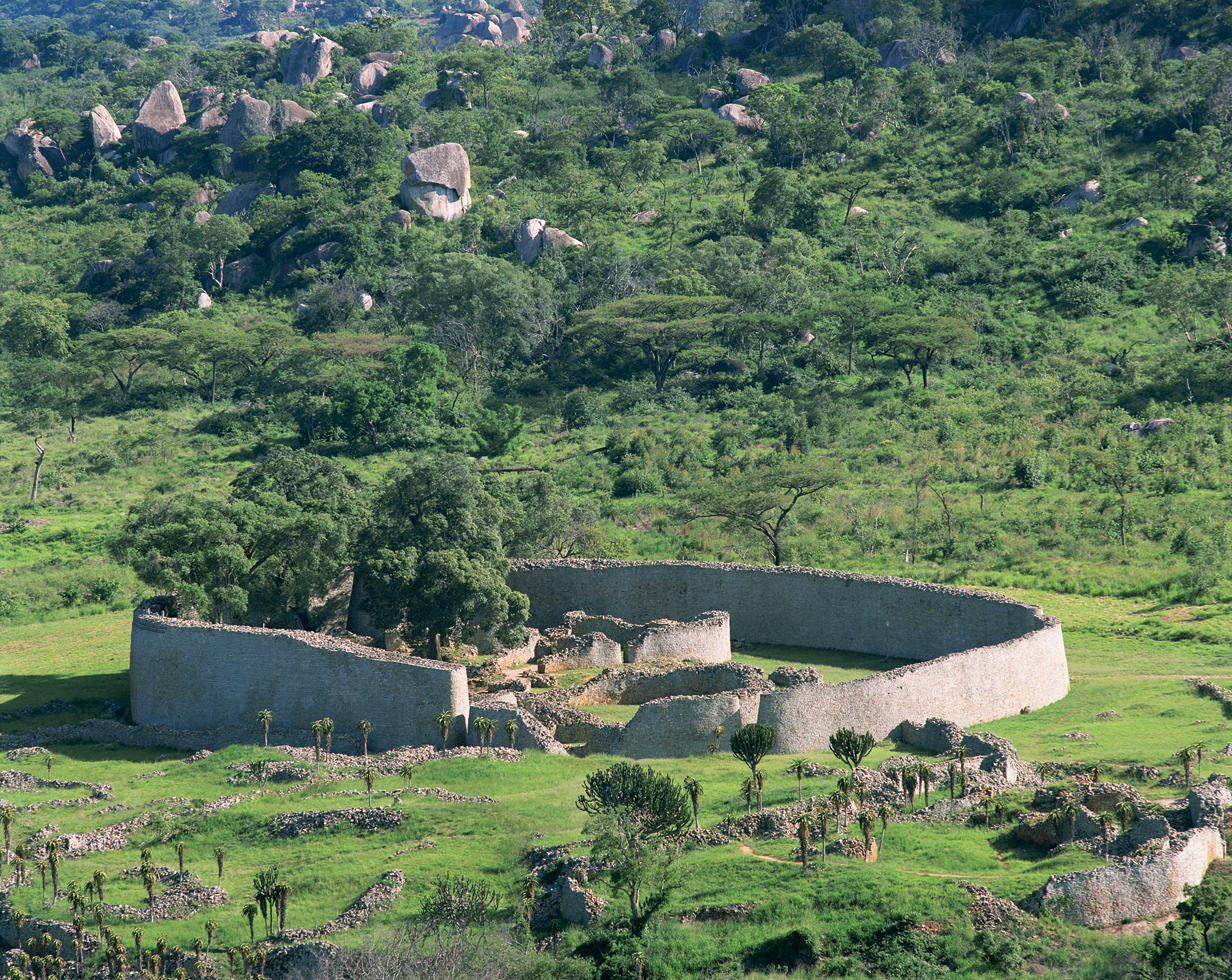A History of World Societies:
Printed Page 291
A History of World Societies Value
Edition: Printed Page 290
Southern Africa and Great Zimbabwe
Southern Africa, bordered on the northwest by the Kalahari Desert and on the northeast by the Zambezi River (see Map 10.2), enjoys a mild and temperate climate. Desert conditions prevail along the Atlantic coast, which gets less than five inches of annual rainfall. Eastward toward the Indian Ocean rainfall increases, amounting to fifty to ninety inches a year in some places. Temperate grasslands characterize the interior highlands. Considerable variations in climate occur throughout much of southern Africa from year to year.
Southern Africa has enormous mineral resources: gold, copper, diamonds, platinum, and uranium. Preindustrial peoples mined some of these deposits in open excavations down several feet, but fuller exploitation required modern technology. (Today, gold-
Located at the southern extremity of the Afroeurasian landmass, southern Africa has a history that is very different from those of West Africa, the Nile Valley, and the East African coast. Unlike the rest of coastal Africa, southern Africa remained far removed from the outside world until the Portuguese arrived in the late fifteenth century — with one important exception. Bantu-
The earliest residents of southern Africa were hunters and gatherers. In the first millennium C.E. new farming techniques from the north arrived. Lack of water and timber (both needed to produce the charcoal used in iron smelting) slowed the spread of iron technology and tools and thus of crop production in southwestern Africa. These advances reached the western coastal region by 1500. By that date, Khoisan-
The nuclear family was the basic social unit among early southern African peoples, who practiced polygyny and traced descent in the male line. Several families formed bands numbering between twenty and eighty people. Such bands were not closed entities; people in neighboring territories identified with bands speaking the same language. As in most preindustrial societies, a division of labor existed whereby men hunted and women cared for children and raised edible plants. People lived in caves or in camps made of portable material, and they moved from one watering or hunting region to another as seasonal or environmental needs required.
In 1871 a German explorer came upon the ruined city of Great Zimbabwe southeast of what is now Masvingo in Zimbabwe. Archaeologists consider Great Zimbabwe the most impressive monument in Africa south of the Nile Valley and the Ethiopian highlands. The ruins consist of two vast complexes of dry-

These ruins tell a remarkable story. Great Zimbabwe was the political and religious capital of a vast empire. During the first millennium C.E. settled crop cultivation, cattle raising, and work in metal led to a steady buildup in population in the Zambezi-
Great Zimbabwe declined in the fifteenth century, perhaps because the area had become agriculturally exhausted and could no longer support the large population. Some people migrated northward and settled in the Mazoe River Valley, a tributary of the Zambezi. This region also contained gold, and the settlers built a new empire in the tradition of Great Zimbabwe. This empire’s rulers were called Mwene Mutapa, and their power was also based on the gold trade down the Zambezi River to Indian Ocean ports. It was this gold that the Portuguese sought when they arrived on the East African coast in the late fifteenth century.